The Ultimate Guide to Developing Mobile Apps
If you're serious about tapping into the fast-growing market of mobile app developers, this book will walk you through the entire process from initial ideation to implementation and beyond.
In this guide, we'll walk through 10 easy steps to developing mobile apps for your business without worrying about coding. The app will be developed using our step-by-step process based on creating native Android and iOS apps. This will enable you to publish your app in the Google Play Store and App Store, and you'll get your app in front of your audience in no time. We will use some of the most popular frameworks and tools to save you time and money on building your app.
With Apple Watch and Android Wear hitting the market, consumers are becoming more mobile. But if you're an app developer, the question is not “Why should I build an app?” but “What should I build?”
Table of Contents
10 Steps to Developing Mobile Apps
1 – Define What Your App Should Be
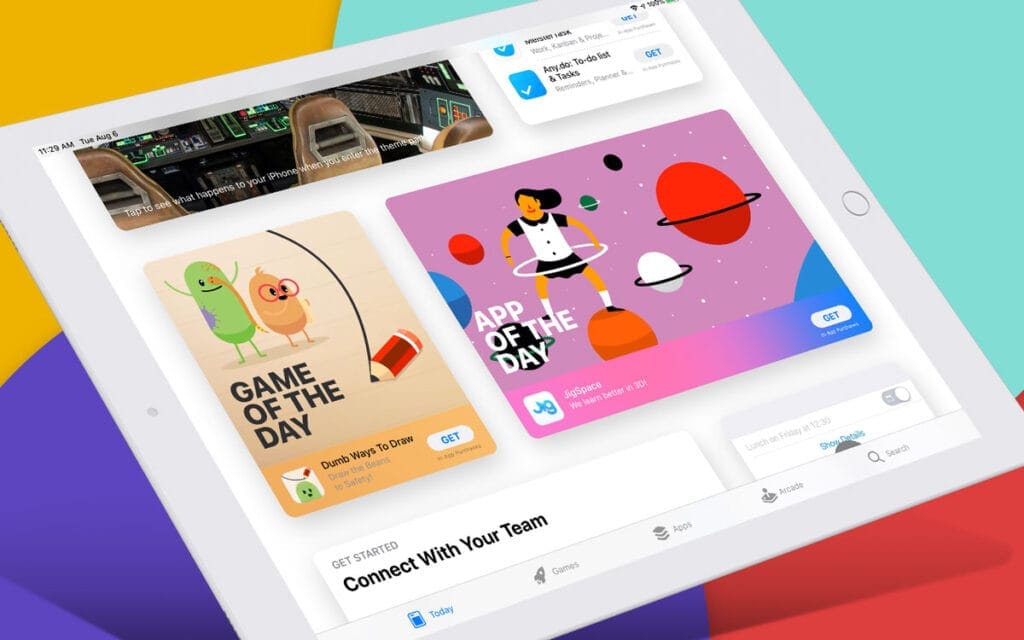
Defining what your mobile app should be is one of the most challenging parts of the mobile app development process. Many developers make apps for fun or because they get paid for it. But the fact is that if you make a mobile app without any clear vision, then it may not be good enough for your business.
Here are some things to consider before you begin developing mobile apps.
What Is Your Mobile App All About?
The first step is figuring out what your mobile app is about. What kind of feature does your mobile app offer? What will your customers be able to do? What will you expect them to be able to do?
You should figure out whether you want to make a business or social-focused app. Think about how your customers might use your mobile app and what they want it to do. Will they need to pay? Will they need to register? Will they need to buy something? Will they need to search for something?
Will They Need Any Kind Of Payment Option?
If your app will require a payment option, think about what the purpose of the payment option is. For example, if your app allows people to pay to access a service, you should know what service you're offering.
Do You Want Your App To Make Money?
If your mobile app makes money, consider how much you want to make and how your customers will benefit from using your app. Some businesses, like social media and dating sites, don't make much money monthly.
However, you can create a mobile app that makes money by charging users for premium features or by selling products.
Is There A Particular User Group You Want To Reach?
If your app targets a particular group of people, such as students, teachers, businessmen, or women, you should consider what it will take to reach these people.
Are There Any Special Features You Want To Offer?
Special features can make your mobile app more appealing to your target audience. For example, some people use a fitness app to track their workout sessions, and others use a shopping app to buy clothes online.
2 – Choose a Platform

Mobile apps have changed the way people do business. They have replaced the traditional desktop apps. They are more convenient than traditional desktop apps and provide a richer experience.
But many mobile app development platforms are available in the market today. Each of them has a different feature set.
Let's start with the basics. Mobile apps are written in HTML, CSS, and JavaScript and use APIs.
You must first figure out whether you need a native or hybrid app. Native apps are developed for specific operating systems. They are compiled to the device's architecture and run faster than hybrid apps.
On the other hand, hybrid apps are built using HTML, CSS, and JavaScript. They run in web browsers, and they look good on any device.
What about performance? Hybrid apps often perform better than native apps because they don't need to be compiled and recompiled for each operating system.
If you want to use the latest features, such as camera access, GPS, accelerometer, and touch events, you may need to use a native app. On the other hand, if you don't care about these features, you can use a hybrid app.
There are two ways to develop mobile apps:
- The traditional way
- The rapid way
Let's consider these two approaches separately.
Traditional way
In this approach, developers create a separate application for each device. They use APIs to connect the mobile devices to the back-end servers.
When they want to change the code, they must create a new version for each device.
This method is suitable for small teams with access to the source code. But it is not suitable for large teams because it is expensive and time-consuming.
Rapid way
The rapid way is similar to the traditional way, but it doesn't require you to create a separate application for each device.
Instead, it creates a single application for multiple devices. This means the application is built once, and you only have to deploy it to the desired devices.
To create a hybrid app, you can look at Apache Cordova.
Cordova supports JavaScript, HTML, CSS, and Apache Cordova APIs. It also allows you to use plugins to extend the capabilities of your application.
3 – Create a Brand Identity
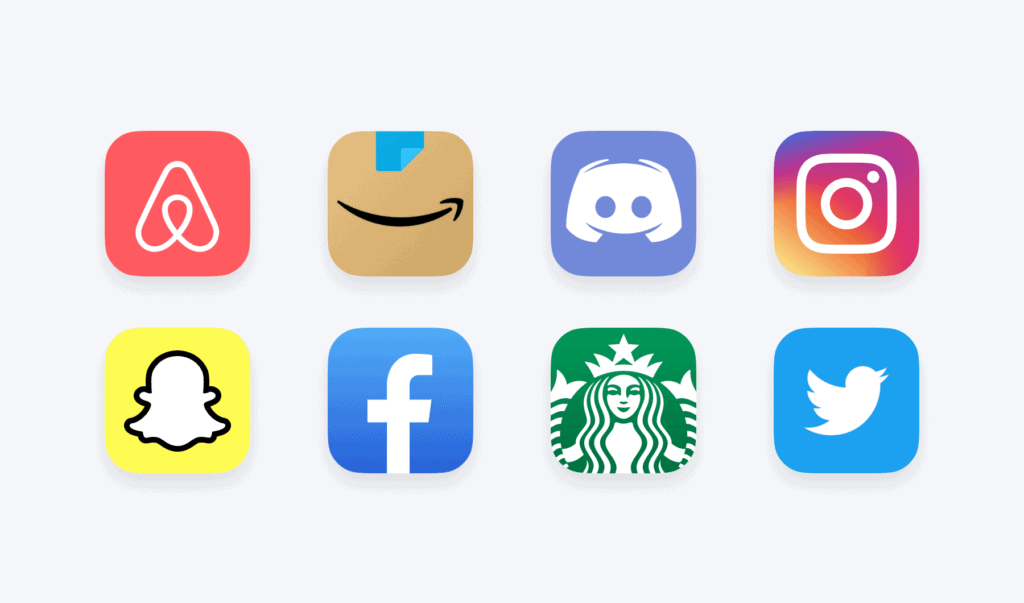
A great brand identity can help build awareness for a mobile app. It will bring consistency and credibility to the app, and it can help attract a large audience. A good brand identity helps the app stand out from the crowd. It is often used as a call to action (CTA), and it will encourage users to click on your app store listing and download it. If people can see your logo, they will be more likely to remember and consider using your app again.
It's essential to ensure that the name, visual identity, font and colours used are consistent throughout your brand identity. If you are starting with your brand, it is advisable to use a logo to provide a good base for everything else. Once you have a logo in place, you can move on to creating other elements of your brand identity.
Create a strong visual identity
Creating a brand is essential as soon as possible. It's also the first impression most people will have of your brand. Your logo is the most critical element in your brand identity.
Your logo is usually accompanied by a tagline, which summarises your brand's mission statement and values. It's a great idea to keep this in mind when designing your logo.
Your logo should include your name and company name. It can be a simple logo consisting of a letterhead, or a more sophisticated one, incorporating several elements. It's important to remember that your logo is the main point of communication for your brand.
Create a colour palette
Before you design the logo, you need to know what colours best represent your brand. It's a set of colours that are associated with your brand. For example, if your brand is business focused, then you may want to choose bright colours, such as red, yellow and blue. If your brand focuses more on creativity and expression, you could go for more soft tones, such as greens, blues and purples.
The colours you choose also depend on how you intend to use your logo. If your logo is to be used as part of a website, you will want to choose colours that complement the website.
Make sure the colours you choose work well together
Colours that work well together include colours that share a base colour, like oranges, yellows, and reds, with complementary colours like green, purple, and blue. You can also add the colours black and white to your colour palette.
Colours that clash can look confusing and can be off-putting. Try not to choose colours that have similar colours in them, such as purple, orange and pink. Colours that are more unusual, like browns and greys, may also work, but they are more challenging to pick out from the rest of the colour palette.
Don't forget to check your brand against competitors
When deciding what colours to use for your logo, it is essential to consider your competitors' logos.
You may want to research online and use search engines to find out what colours other brands use. You can also ask your friends and family about different brands. You can even search your local business directory to see what colours other businesses use.
Once you have chosen your colour palette, you can start to think about designing the logo itself.
Use a unique logo
Having a unique logo will make your brand stand out from other companies. Finding a distinctive logo can be challenging, but if you can find one, it will help with your brand recognition.
If you are having trouble choosing a logo, there are many great resources online to help.
4 – Build a User Story
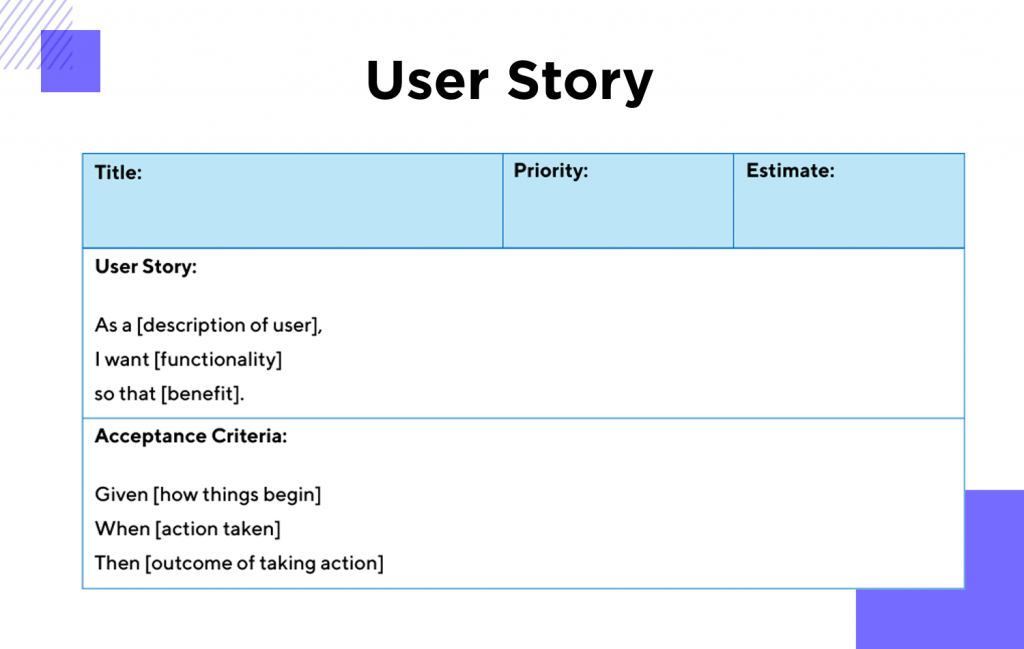
As a user-centric design consultant, I spend most of my time designing and developing websites and web applications, but increasingly I find myself working with mobile application development teams. For me, this is both exciting and daunting. I am excited because I love designing great-looking and functional user interfaces and am genuinely interested in the challenges of bringing new technologies together coherently. Daunting because I haven't developed mobile applications for a while, and now the stakes are much higher. The mobile app has to be helpful, work seamlessly, and have a high degree of engagement.
So why build a user story?
User stories are not just a “user interface” exercise. They are a method of capturing a user's experience when using a particular application. By breaking down this experience into specific actions and tasks, we can understand what the application should do for the user and what benefits it should deliver. This helps focus the team's energies and ensure they build the right solution.
Why we should create user stories
The traditional approach to user story creation has been to ask a series of questions about the problem the user will face and then write down the answers. The approach is straightforward but not very effective. A user story should not be a list of requirements but should include the problem statement and a clear description of the solution the user will receive.
Here is a typical question-and-answer format.
“As a [type of user], I need [a function] so that [the benefit to me].”
This type of user story focuses on the problem rather than the solution. The questions are more focused on what the user should do than what the user will do. And the user story will often include multiple solutions.
A more helpful user story would look like this.
As a [type of user], I want to achieve [the benefit] because [the reason].
By breaking down the problem and solution into smaller chunks, the team can better understand what they need to accomplish and use the resources available to them to get the job done.
Why user stories are important
User stories aren't just for the user interface team. Developers need to be involved from the start. It is easy for a project to be set up with a user-interface approach, where the UI developer designs and develops the user interface and the software developers implement it.
However, with mobile applications, there is usually a gap between the designers and developers, and the developers write the code. If the users write the user stories, it will help the developers understand the problems they will solve and the solution they will build.
They can also help the designers think about the user experience in a broader context. This will help ensure that the designer thinks about the “big picture”, not just the “low hanging fruit”.
What to keep in mind
As with any other documentation, user stories are subject to change. So if you find yourself with many stories, you may want to use a spreadsheet to make them more manageable. But it's vital to capture the story concisely that the team can use.
And remember that the users will have different perspectives on the designers and developers. You will also want to think about how you will present the user stories to the users.
User stories can also be a powerful way to ensure your application is accessible. Users will be less likely to be able to complete a task if they cannot figure out how to do it.
5 – Create a Mockup

A mobile app can be a big project. You must ensure you're on top of your game to avoid a massive pile of spaghetti code. In this tutorial, we'll show you how to create an app mockup and share it with your client, so they know what it will look like in real life.
Creating a mockup is an essential step in the development process. This way, you can visualise what your app will look like and what you need to do to make it happen. This will help you get buy-in from your client early on and prevent them from changing their minds halfway through the process.
What is a mockup?
A mockup is a digital representation of a finished product. When making a website, a mockup is a visual representation of the final site. For example, when making a web design, you might create a sketch, create a Photoshop mockup, and finally, use that image to make a live site.
When designing an iOS app, you'll create a wireframe. A wireframe is an interactive mockup of the interface. You'll probably use Sketch or Photoshop for creating wireframes. It helps you think about the app visually. If you want to get fancy, you could even use Framer.
How to create a wireframe?
The first thing you should do when starting your project is to create a wireframe. Wireframes are essential to the UX (user experience) design process.
There are two types of wireframes – interactive and static. An interactive wireframe is an app that allows you to click around the screen and see how your app works. It's great for testing different ideas and finding the flow of the app.
A static wireframe is a more traditional approach. You'd use this if you want to give a client a visual representation of how their app will work, but you're not interested in testing it.
You can create a wireframe either digitally or physically. You'd draw the wireframes on paper or a whiteboard with physical wireframing—digital wireframing means using software like Framer. You can make the wireframes on your computer and then print them.
You can use Adobe XD for wireframing, but if you're a designer just starting, you should try Sketch.
6 – Create the User Experience
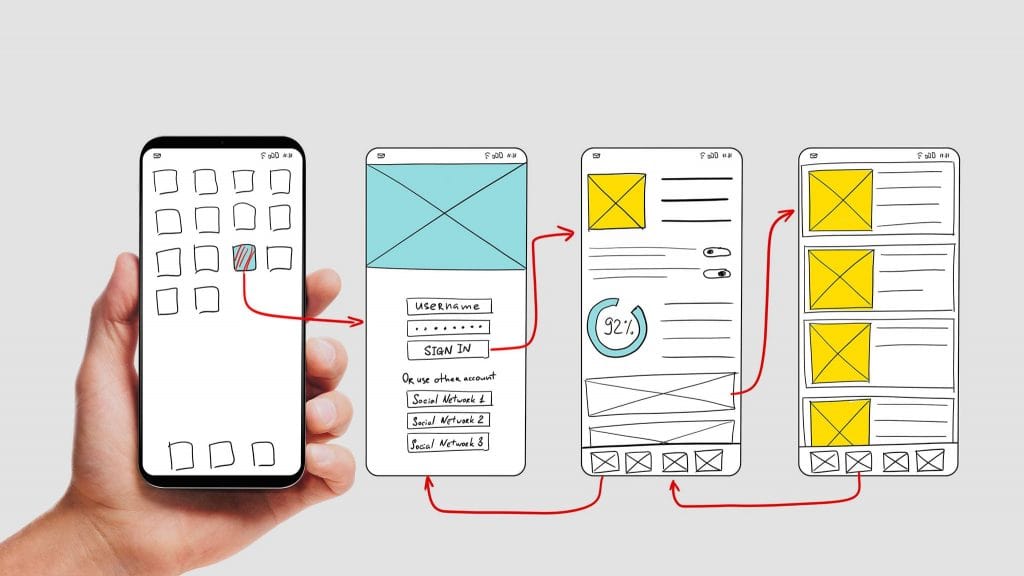
Mobile application design is different from web design. To create the user experience for a mobile app, you should design the app using the mobile perspective first.
Certain things should be taken care of while creating the user experience for the mobile app. Mobile apps are the new way of doing business, and having a good user experience will boost your business.
Developing mobile apps should be done using the user's perspective first. Here are some essential aspects you should consider while designing your mobile app.
Mobile-first approach
Mobile apps are no longer considered a new trend; they are now a new business model.
With the growing number of mobile users, you must adapt your website and app to the mobile screen size. Mobile apps work well on smaller screens, so the user doesn't have to scroll much. When a user visits your website or app on his mobile, he expects to view the content in a way that fits the screen size.
In addition to this, the user's expectations are changing. People expect their apps to be light and quick. You should provide an easy-to-use interface, so the user doesn't have to spend much time figuring out how to use your app.
App-first approach
The user is expecting a mobile app that looks like an app. This means you should start designing the mobile app by adding the UI elements and then think about how you can add the content to make it look like an app.
If you have a native app, you should be able to reuse some of the code you used in the native app. Also, you can use the same UI components already available in the Android/iOS app stores.
Another critical aspect of designing a mobile app is the design language. The design language should be consistent throughout the app, and the user should be able to understand what the app is about immediately.
The app should be easy to use and simple to navigate between the different sections. You should avoid the long list of menu options. Instead, you can use a simple navigation bar with a few menu items.
When designing a mobile app, you should consider the screen orientation and resolution. You need to optimise your app for both portrait and landscape mode.
Responsive design
Designing a mobile app should be done using responsive design. A responsive app should work well on all devices with different screen sizes.
Mobile apps should be easy to read and have less text. If possible, use less text and use images instead of text.
A good user experience is crucial when designing a mobile app.
7 – Create the App Back End
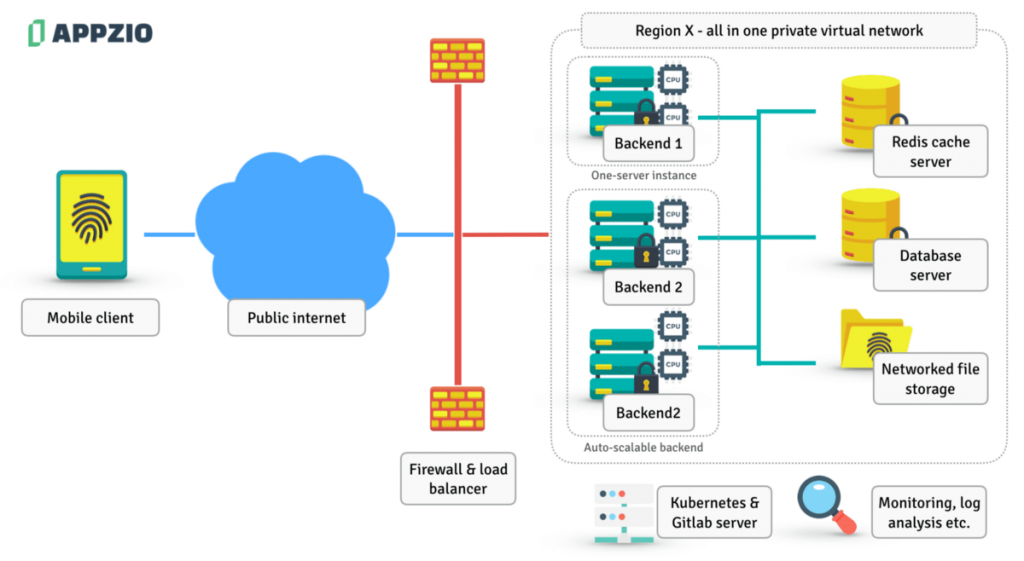
Creating the app back end is critical when developing mobile apps. Many companies have created a custom app back end for their mobile app. This app can be used by the developers creating the mobile app.
The app back end contains the data or information required to create the mobile app. It's usually built as a web application running on a server.
When developing the back-end app, you first need to decide what data you want to store in your app. This is the information required to store in the app back end.
Secondly, you need to know the structure of the app's back end. The app back end must have a proper structure because it should have the information needed to run the mobile app. It should also have the information required to make the mobile app.
Thirdly, you need to know the technologies used to build the back-end app. For example, there are many different languages like Java,.NET, Swift, Python, etc. You must know about each technology and the features that it has.
For example, you must know about Java and its many different features such as Java Server Pages, Servlets, Struts, Spring, Java EE, Android Studio, etc.
You must know the language that is used to develop the mobile app. You must know the features that are provided by the programming language.
8 – Write the Code

Here are some of the coding languages you need to know:
- HTML is the primary language you need to know to develop a mobile app. It has tags and elements. You can use HTML to create attractive web pages.
- CSS is another important language that you must know. It helps to display your web page in different ways. For example, you can add different styles to an image tag, or you can add a border to an entire webpage.
- JavaScript is an essential language for creating dynamic web applications. You can use JavaScript to add interactive features to your web pages.
- Java is a programming language used to build Java applications.
- Objective C is a popular programming language used to build iOS apps.
- Swift is a new programming language Apple has designed for building apps for both iOS and macOS. To develop software solutions using Swift, you can hire Swift developers to ensure high-quality and efficient development.
9 – Test the App
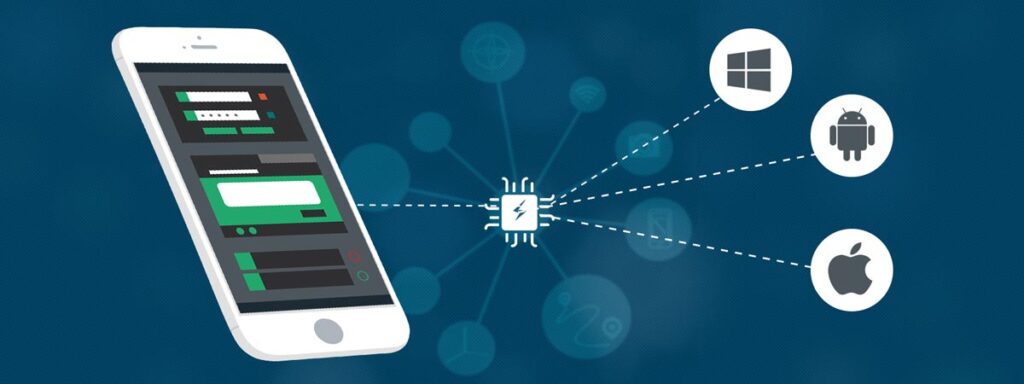
Before you make your first release, you need to test your app before launching it to the public. Here's a list of 5 apps you should test before launch.
- Bug tracker: It's essential to be able to identify and fix bugs before you release your app. You can use a bug tracker to track your app's bugs. Some of the major bug trackers include JIRA, Fogbugz, and TestTrack.
- Google Analytics: Before releasing your app, you need to set up Google Analytics so that you can track your app's traffic.
- Crash reporting tool: You need to know what your app crashes on. You need to use a crash reporting tool if your app crashes often. You can use Crashlytics to collect crash reports and send them to you.
- In-app feedback tool: It's always helpful to receive feedback from users. You can use the in-app feedback tool to collect feedback from your users. Feedback tools like SurveyMonkey, Qualaroo, and Typeform let you collect user feedback and give you insights.
- Beta testing: Beta testing lets you test your app with your testers before making the app available to the public. It's the best way to find and fix bugs before making your first release. You can use the beta list tool to find beta testers and invite them to test your app.
10 – Launch
App Store Connect is an application provided by Apple to help developers to publish their apps in the iOS App Store. With it, developers can track the progress of their apps on the App Store. It provides a unified interface to manage all the processes related to app development and marketing, including app review, ranking, customer support and app analytics. This part introduces you to launching a mobile app on the App Store.
There are two ways to launch a mobile app on the App Store.
First way: Using the App Store Connect
If you are using Xcode, you can use App Store Connect to upload your app's binary to the App Store.
For the first time, you need to create a developer account and sign in to the App Store Connect. If you do not have a developer account, you can register here.
Now, open the App Store Connect and click the “Create App” button. The App Store Connect will ask you to create a new app and enter information about the app.
After creating an app, the App Store Connect generates an iTunes Connect ID (a unique identifier) for you and displays the app in the App Store.
After that, it takes you to the App Store and opens it with your app in the top left corner.
You can skip this step if you have used the Xcode to create the app.
Second way: Using Xcode
If you have developed the app using the Xcode, you can go to the App Store Connect and click on the “Upload Binary” button.
Then, select the .ipa file of your app. Click on “Next”, and provide a file name, description and keywords for the app.
The App Store Connect will now show you a preview of your app.
Now, click on “Submit for Review”.
The App Store Connect will generate a new App ID for your app and provide a link to the app.
Click on that link, and you will be redirected to the App Store.
Here, you can search for your app and view ratings and reviews.
Conclusion
You're wrong if you don't think a mobile app could benefit your business. And if you don't believe you can develop an app, you're missing out on a new market.
Apps are perfect for reaching new customers and turning them into loyal clients. They're cheap, they're easy, they're flexible, and they're profitable. But that doesn't mean that the process of creating an app is a cakewalk.
You'll find that building an app isn't something that happens overnight, and it's working on getting a quality product to market.
If you're looking for a developer, please get in touch with us via phone or email. We can help!
